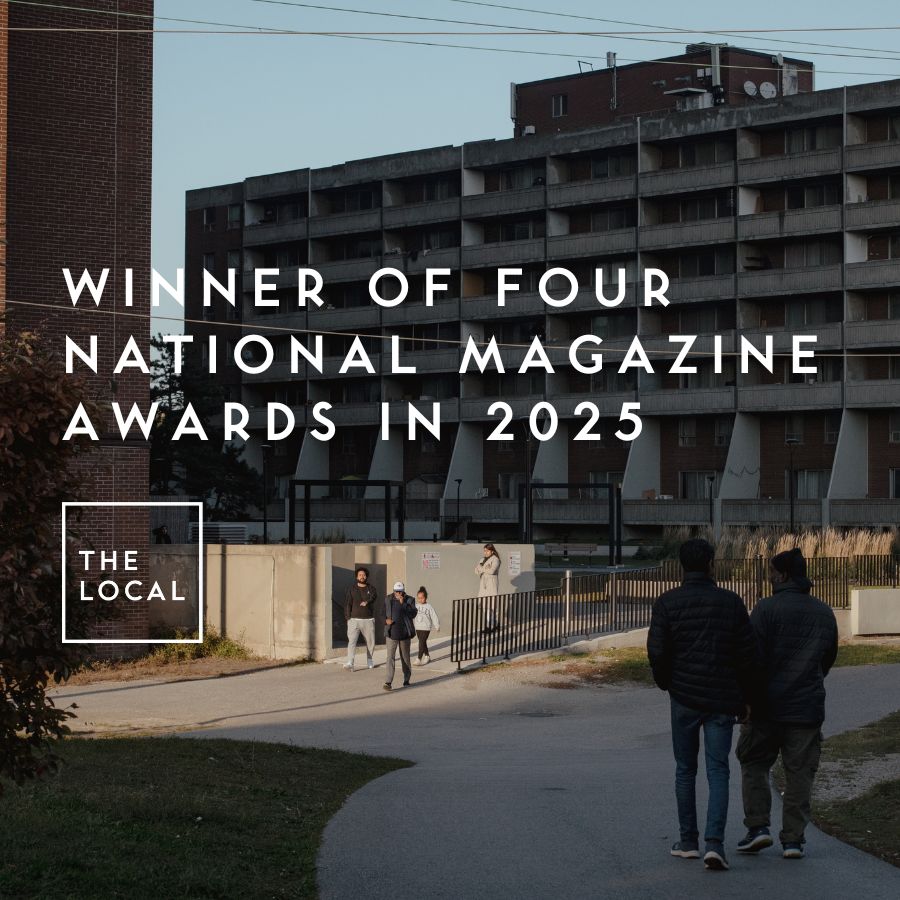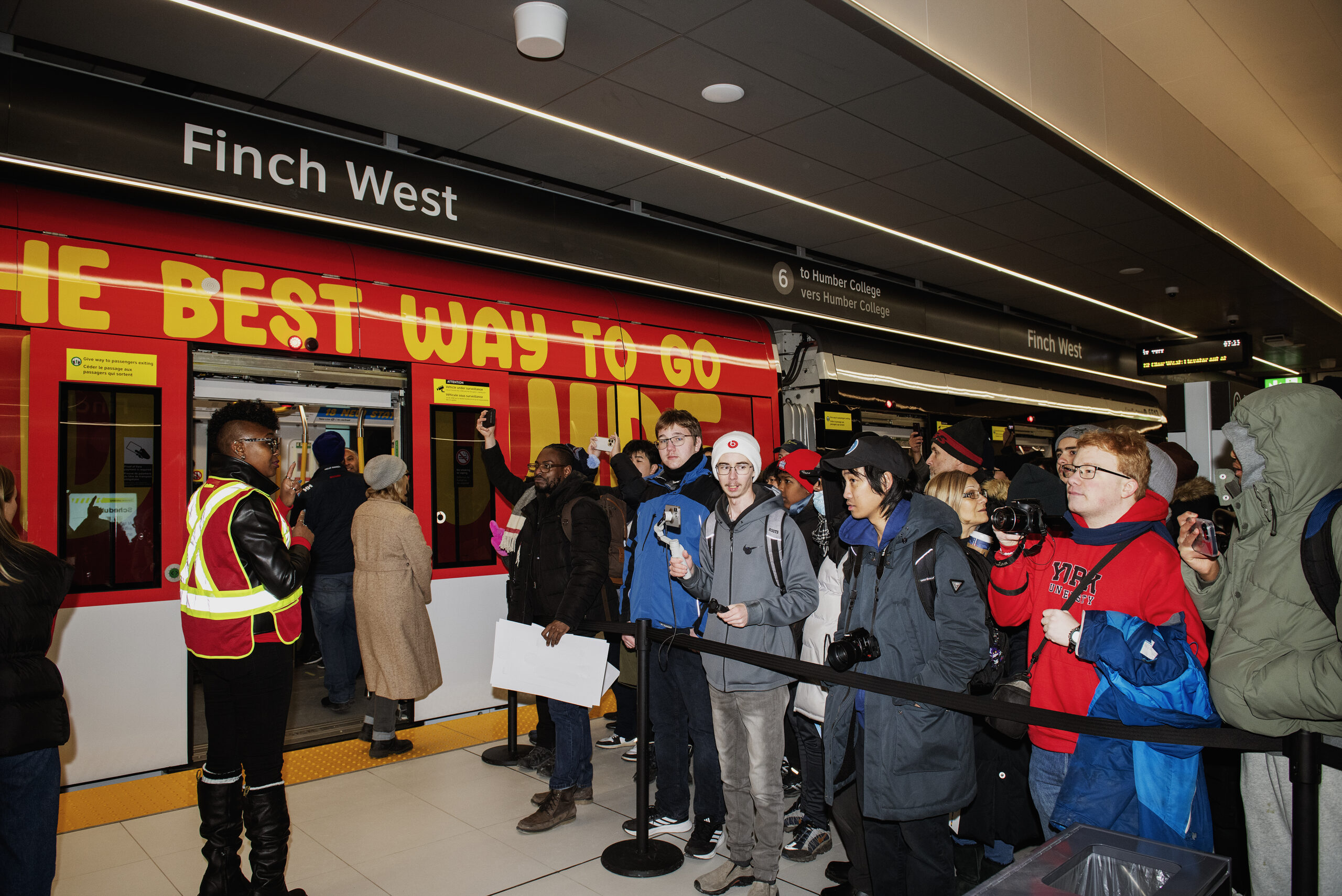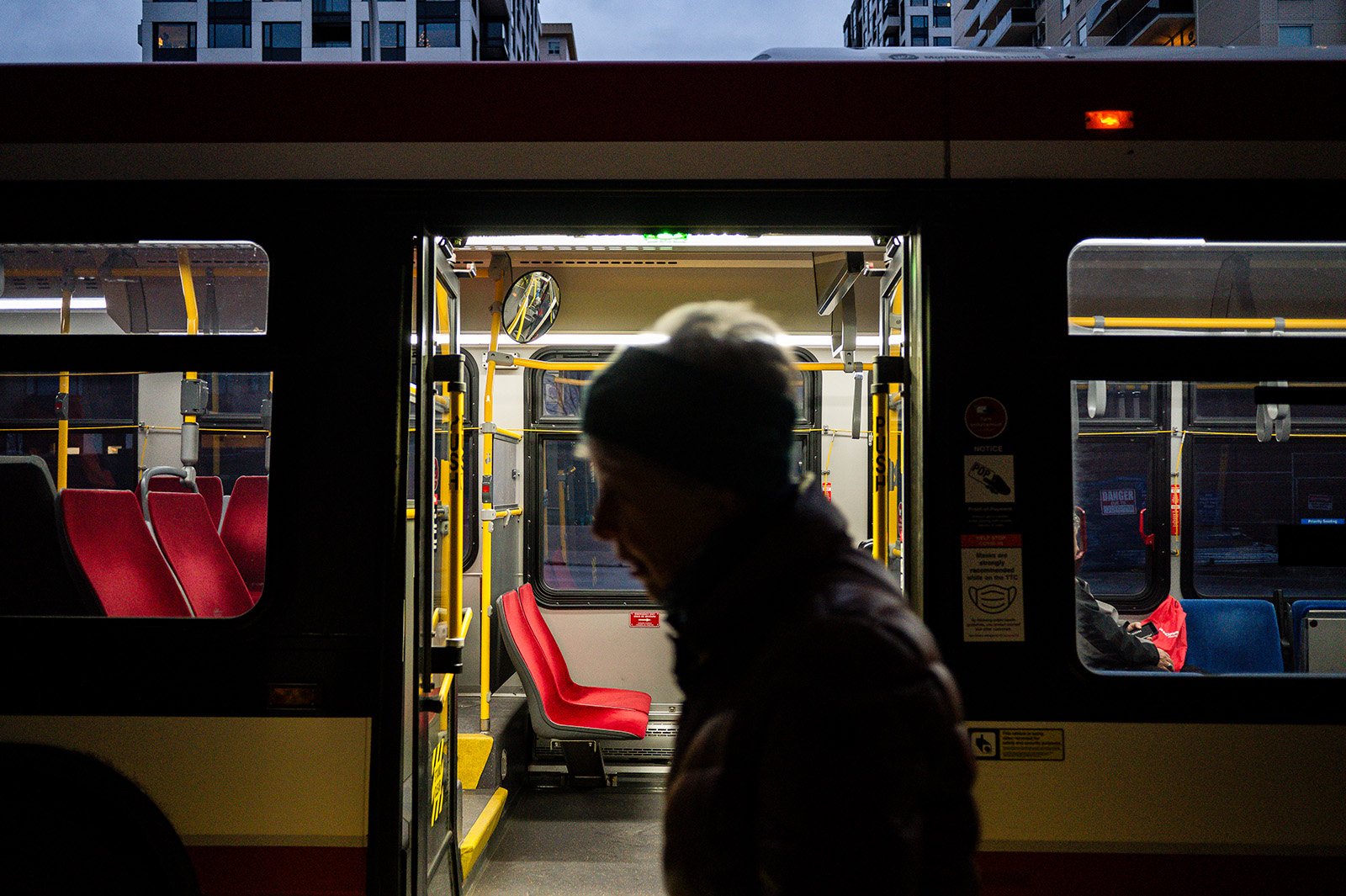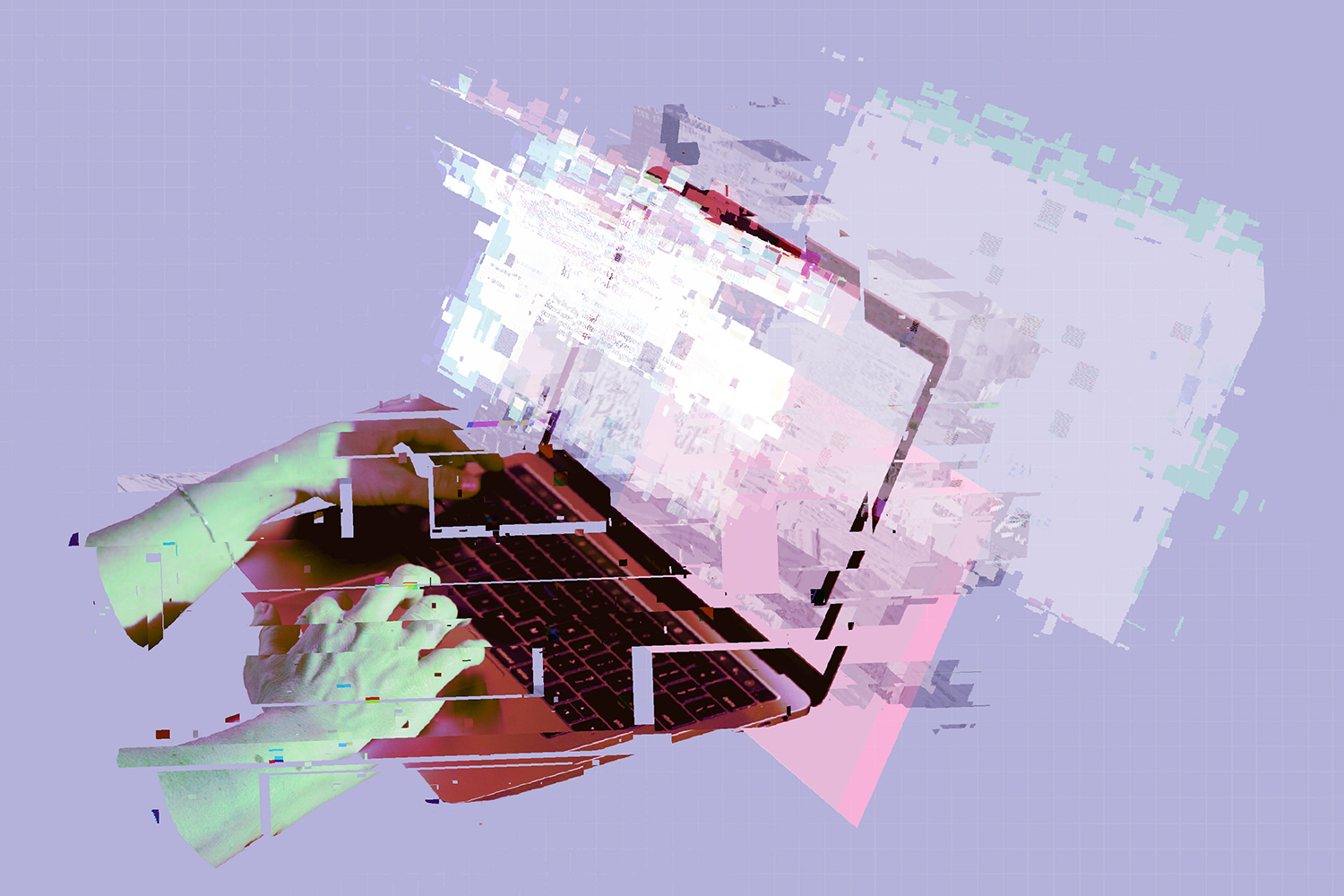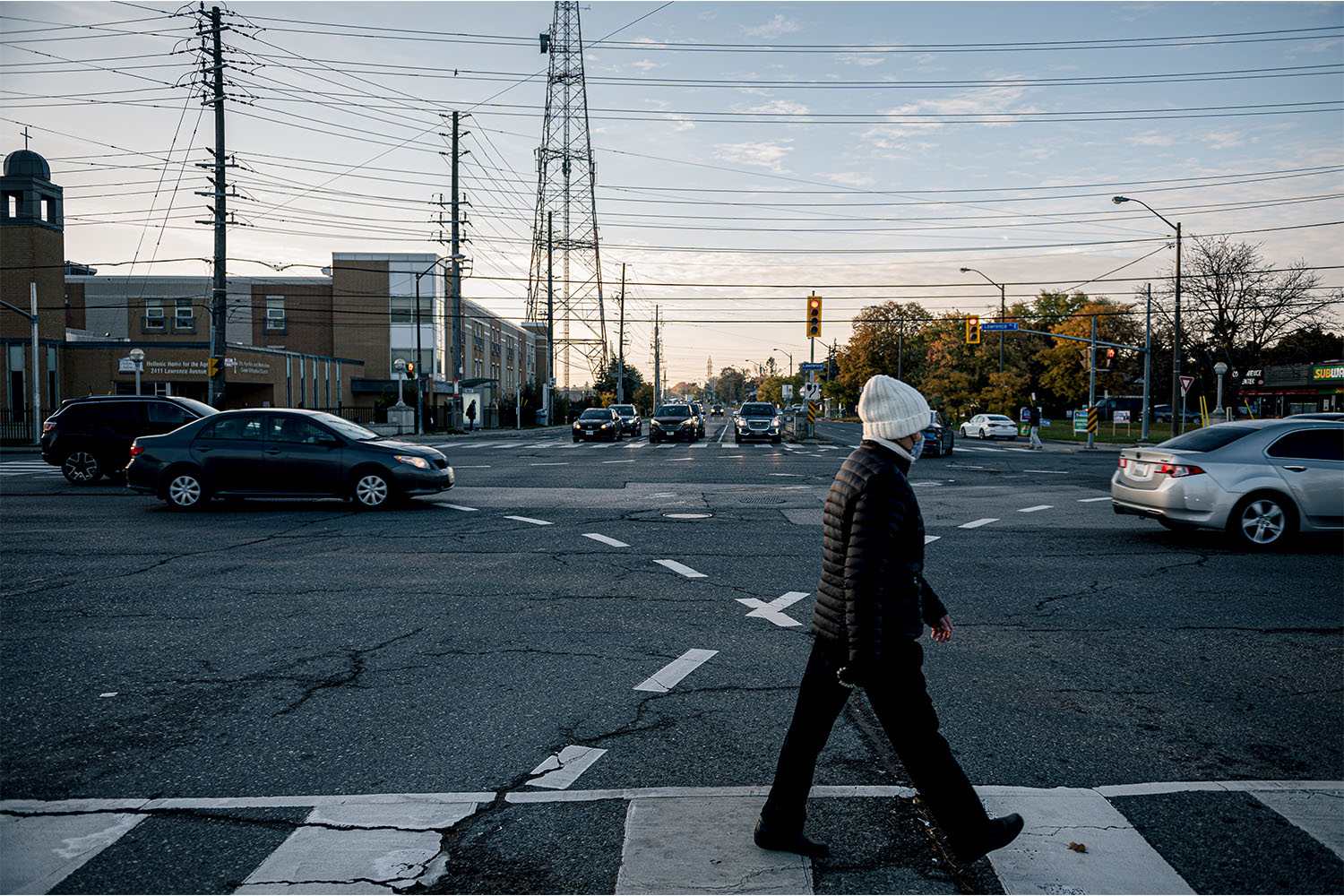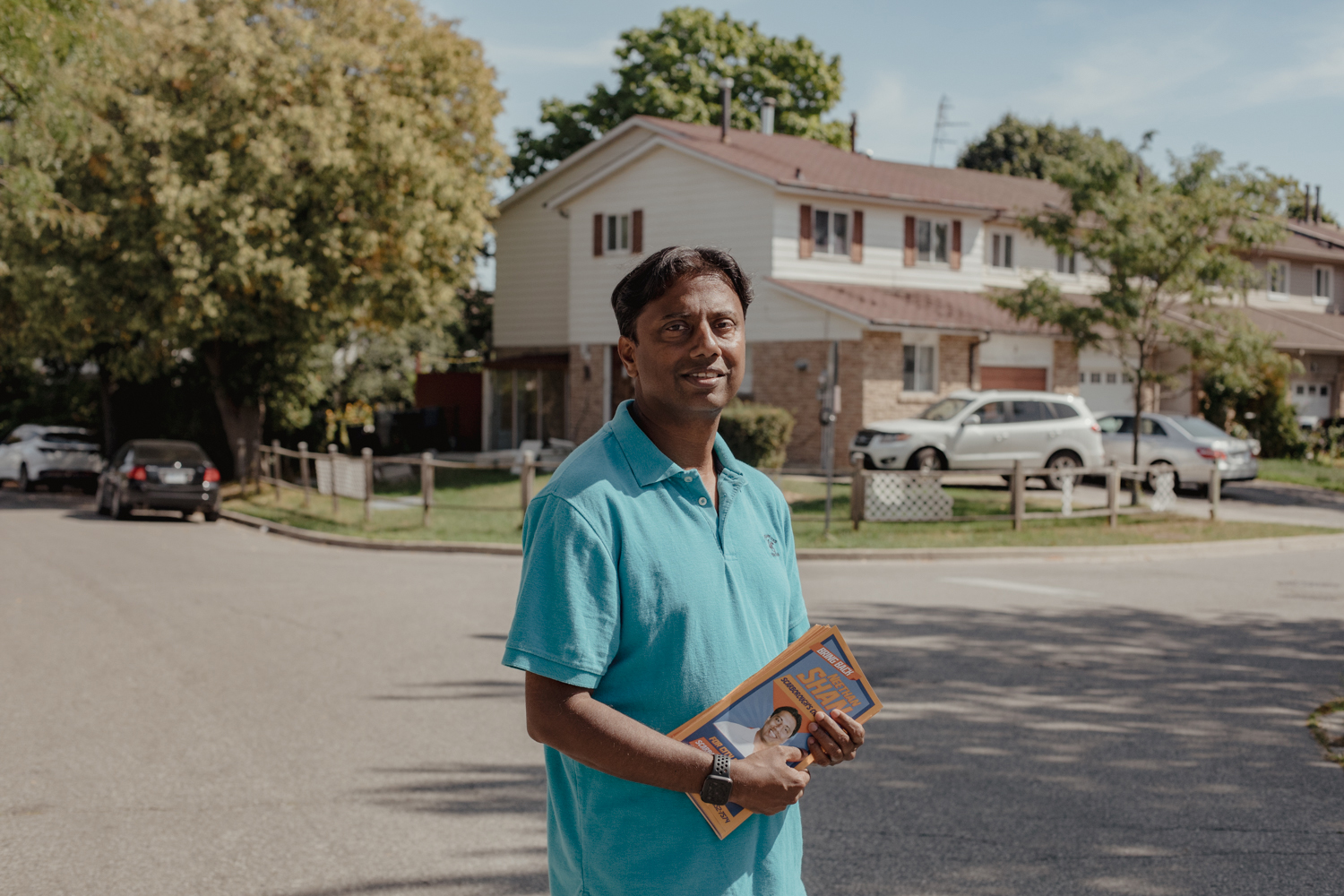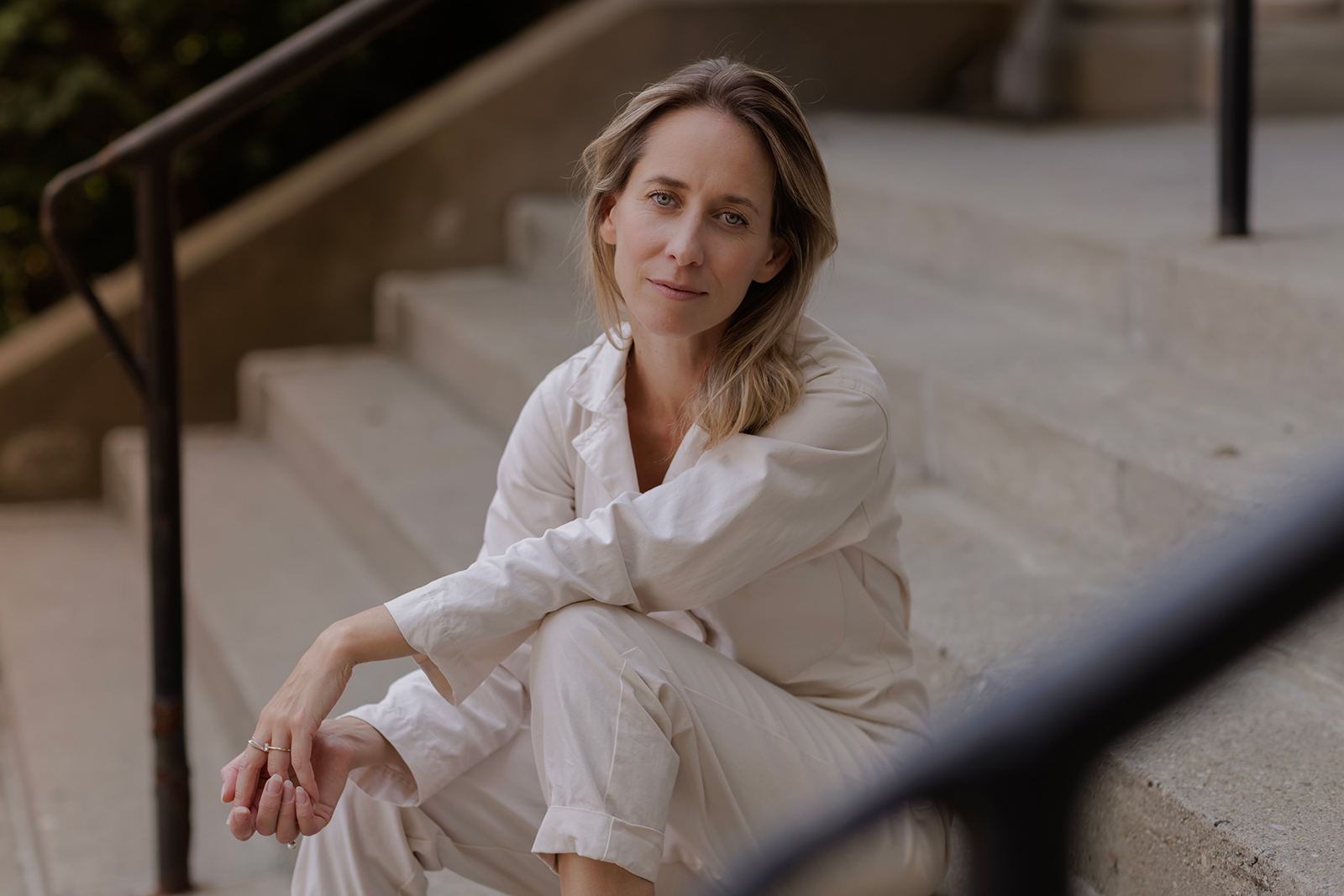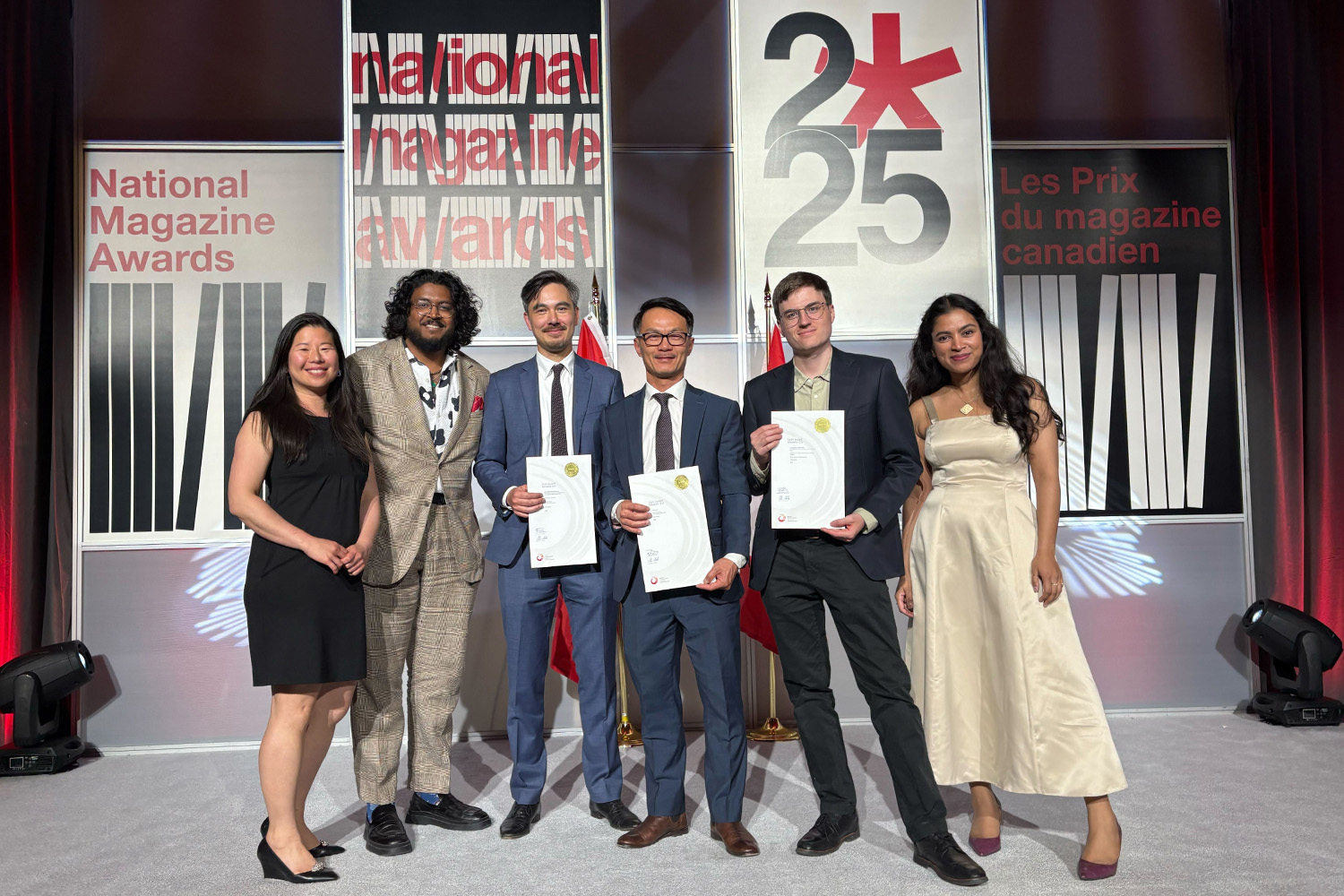
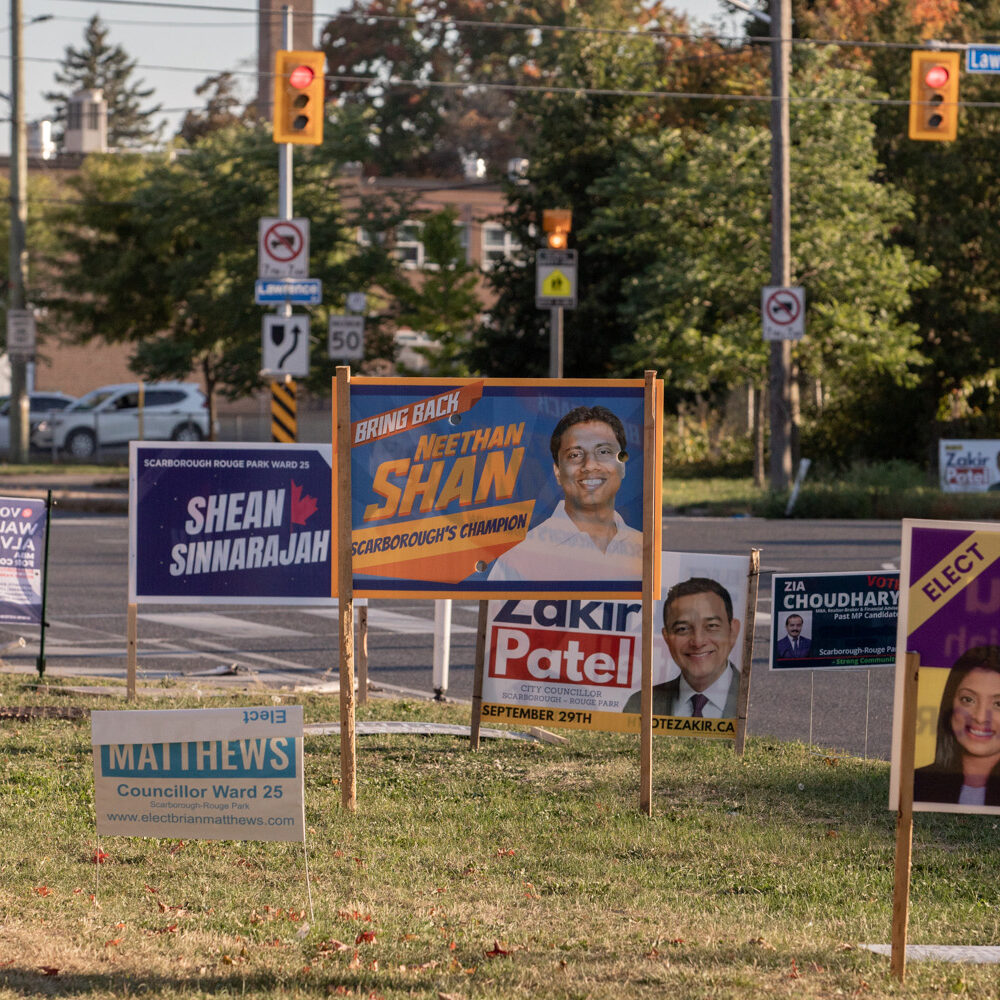
For residents of Toronto’s easternmost ward, City Hall—and the people making essential decisions about how the city is run—can feel a million miles away. In Scarborough–Rouge Park, a riding where some residents feel closer to their neighbours in Markham or Pickering than to decision-makers on Queen Street West, it’s sometimes hard to feel connected to what happens at city council. Choosing someone to represent the ward is a matter of bridging that gap—of deciding who could best live up to the promise of prioritizing Scarborough while also shaping Toronto’s future from City Hall.
That’s the promise that many candidates are running on in the Scarborough–Rouge Park by-election this month. On Sept. 29, residents of the ward will go to the polls in a vote triggered by the departure of former councillor Jennifer McKelvie, who resigned after winning a seat as a Liberal member of parliament for Ajax. There are 20 candidates vying for the job. And while the winner will only be in office for a year, until the municipal elections in October 2026, whoever wins the seat will have a leg up in next year’s race given the disproportionate advantage incumbents have in Toronto.
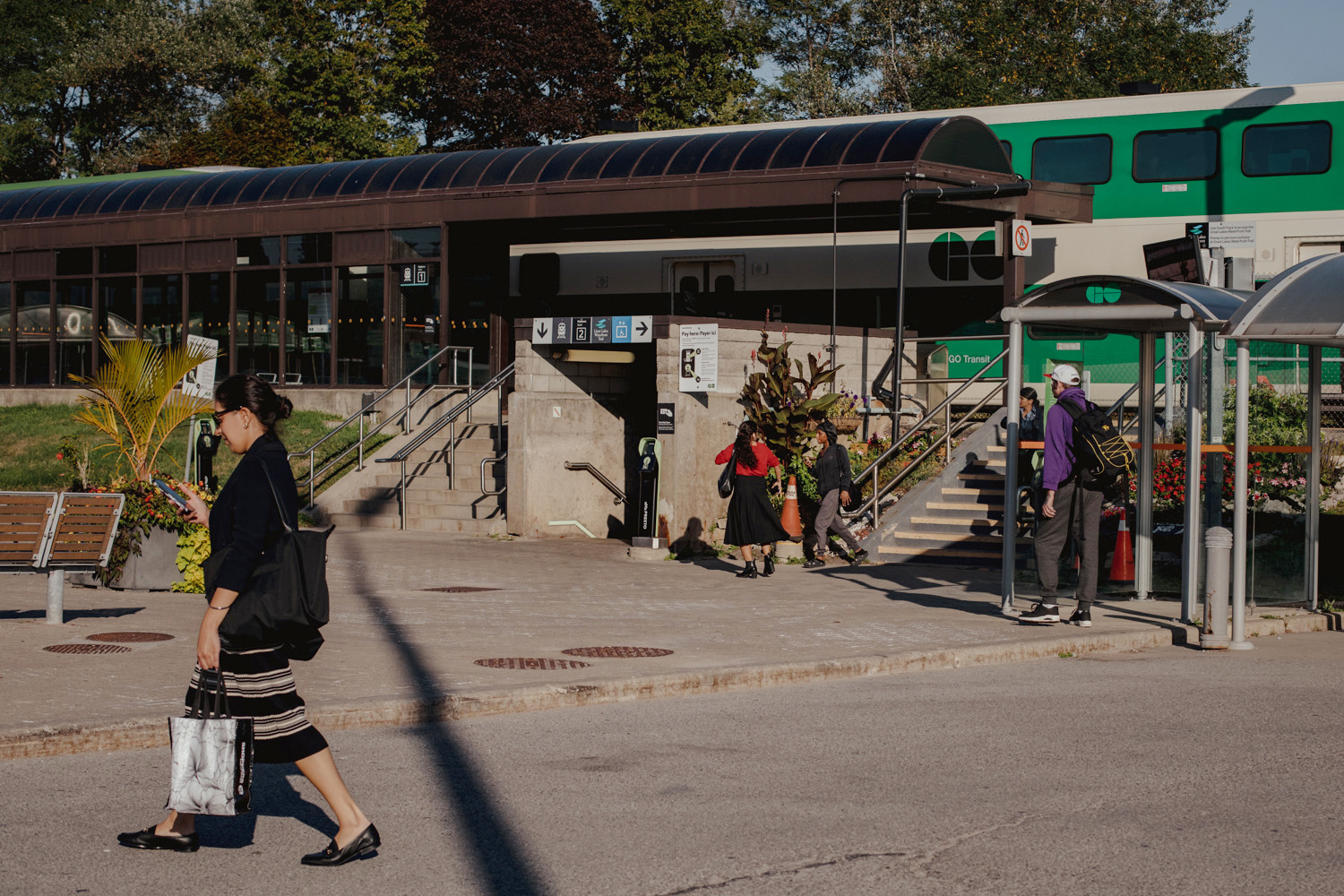
Nithursan Elamuhilan, a data analyst who lives in the Scarborough–Rouge Park neighbourhood of Highland Creek, says that people in his community struggle to make the connection between what goes on at City Hall and how it impacts their day-to-day lives, largely because of how left behind they feel. Other parts of the city are getting shiny new subway and LRT lines, for example, but the future Line 2 extension into Scarborough terminates west of the ward’s border. When decision-makers constantly leave a ward out of major projects, “it’s pretty natural for people to see themselves as an outsider to the rest of the city…and feel left out in the progress you see elsewhere,” Elamuhilan says.
There is an inherent tension in the role of city councillor. Local constituent work, as unsexy as it can be, often touches peoples’ lives the most. At the same time, a good councillor needs to rally their fellow councillors to get big, city-wide projects off the ground. You need to be able to both fix that specific garbage can in the park and get millions of dollars approved for a new transit project. But in Scarborough–Rouge Park, residents have felt for years that those big banner projects aren’t serving them, and local projects aren’t getting off the ground either. That leaves them looking for a candidate who, while balancing obligations to the ward and city as a whole, can finally put Scarborough first.
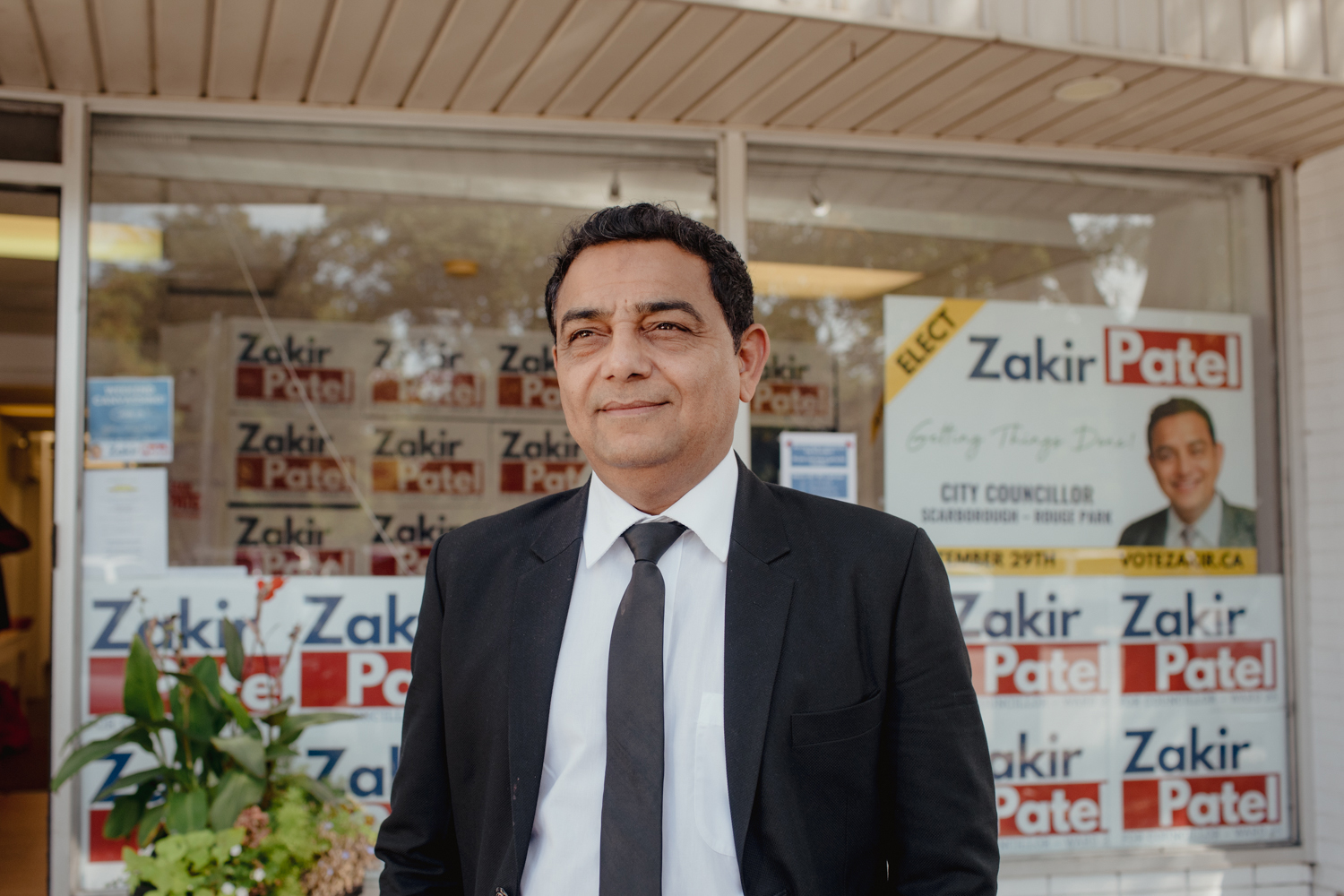
When Zakir Patel’s friends who live outside the area describe residents of Scarborough, they call them perpetual complainers. That’s never sat right with him. “It’s not complaining,” says Patel. “It’s reality.”
Patel is a candidate in the September by-election, and one of three Toronto District School Board (TDSB) trustees in the race. Up until the province took over the TDSB and locked trustees out of their roles last month, Patel represented the neighbouring ward of Guildwood, and was also vice-chair of the board.
He isn’t alone in framing Scarborough as a land of “have nots” compared to the rest of the city. Scarborough residents wanting their fair share of city services is the sentiment that candidates hear over and over again on the campaign trail.
Geographically, Scarborough–Rouge Park is the largest ward in Toronto. Stretching all the way from Steeles Avenue in the north to Lake Ontario in the south, it borders both Markham and Pickering. In between those borders are the Toronto Zoo, the University of Toronto’s Scarborough Campus, and Rouge National Urban Park.
It’s also an extremely diverse ward: 75.6 percent of residents here identify as visible minorities, mostly South Asian and Black, compared to 55.7 percent of Torontonians. Notably, Scarborough–Rouge Park is home to one of the largest Sri Lankan Tamil diaspora communities outside of Asia. The ward is also decidedly working-class, with an average income of $47,840 compared to the city’s $62,050. It’s easy to imagine why Ward 25 residents feel disconnected from what politicians are deciding downtown: geographic distance is one thing, but when city councillors also make nearly $130,000 more than the average person living here, it can feel like they live on a different planet altogether.
Election Night
When polls close in Scarborough-Rouge Park at 8 p.m. on election night, The Local will have all the live results.
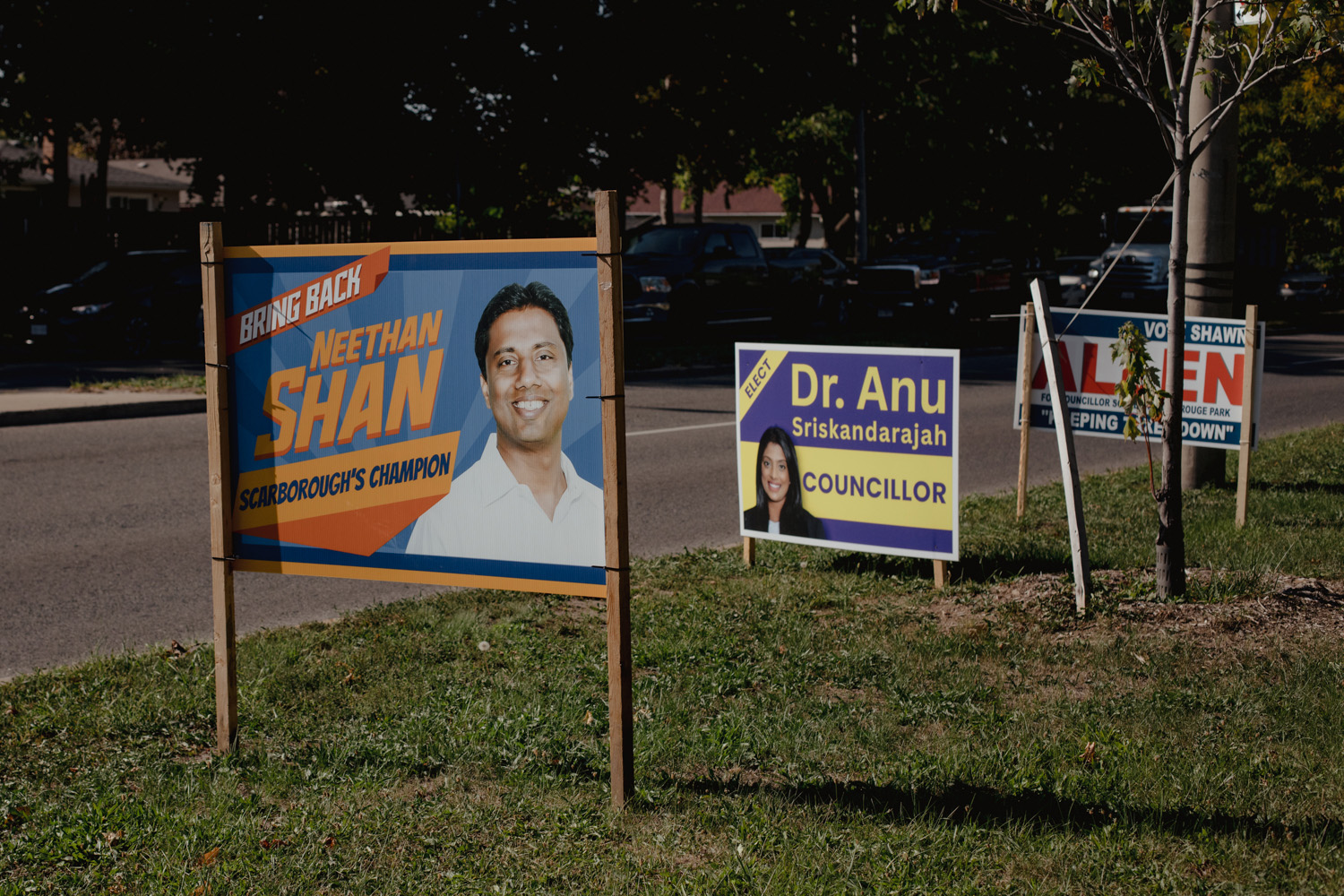
Transit is an ongoing issue. In 2023, the TTC cut service to 35 routes across the city, many of which were in Scarborough. The region is expected to wait until at least 2030 for the opening of the much-needed Scarborough subway extension, and even then it ends well west of the ward. Housing is also a major issue here, as it is in the rest of the city. But despite needing gentle density, as the only ward in the city with negative population growth, Scarborough–Rouge Park was not one of the nine wards included in the council decision to allow sixplexes earlier this year. (The ward’s next councillor could choose to opt into the policy.)
For the many Scarborough residents who feel “the establishment” has done little to help them, what’s most important is a councillor who can agitate and loudly bring Scarborough’s concerns to council. “We need new blood,” says Ron Parkinson, a retiree and co-founder of the community advocacy coalition Scarborough United Neighbourhoods (SUN). (Parkinson says some of his neighbours call SUN a NIMBY group, but he identifies as a “MIMBY”: maybe in my backyard). Looking at the slate of candidates, he tracks who the perennial candidates are and who the fresh faces are—and whether or not they’re all in for Scarborough. To Parkinson, everything goes downtown: tax dollars, new infrastructure, exciting new parks, transit projects. “All the money is spent down there, and we can’t even get another washroom for [Guild] Park.” The park, which is immediately to the west of the ward and part of the greater Scarborough waterfront, has been around since 1978, but the City isn’t installing an all-season washroom building until 2028 at the earliest.
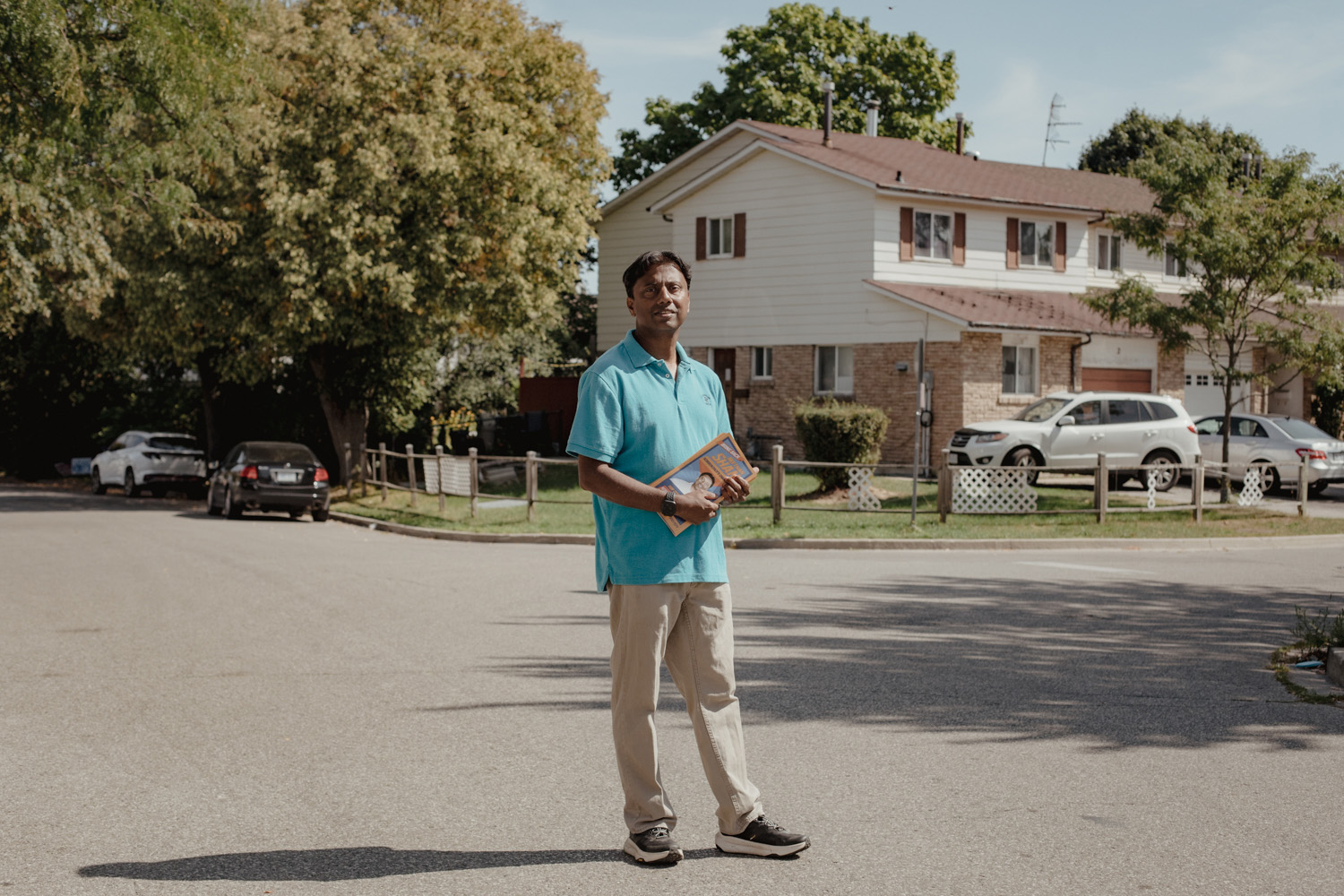
Candidate Neethan Shan has the tricky job of selling himself as a qualified, experienced candidate with longtime involvement in local politics, but also as someone who isn’t part of the establishment. He’s a frontrunner by virtue of his previous council win in a 2017 by-election, though there are no current local polls to measure who’s leading the race. In a bright, eye-catching blue and orange font reminiscent of Zohran Mamdani’s viral campaign for mayor of New York City, Shan’s campaign website calls him “Scarborough’s Champion.”
Shan, who was born in Sri Lanka and whose family arrived in Canada as refugees when he was 16 years old, is a perennial candidate. He ran for provincial office as an NDP candidate five times between 2007 and 2022, and was a trustee for the York Region District School Board from 2006 to 2010. He ran for Toronto city council in 2010 and 2014, coming in second both times to incumbent Raymond Cho. Shan finally got his break in the 2017 by-election, winning against 28 other candidates after Cho stepped down. Shan was Toronto’s first Tamil-Canadian councillor and ran on a platform that put equity and diversity at its centre.
His time at City Hall was short-lived, however: after Doug Ford shifted borders and cut the number of wards from 47 to 25 to correspond with the federal and provincial ridings partway through the 2018 mayoral election period, Shan lost his seat to Jennifer McKelvie. Since then, he has been a trustee at the TDSB and in 2024, became the first TDSB chair of South Asian descent.
“Scarborough does not get its fair share,” Shan says. It’s a drum he’s been beating for a long time. After being elected in 2016, Shan told CBC News that Ward 42 (which was absorbed into what is now Scarborough–Rouge Park) had been “neglected” for too long. “We feel we’re not getting a fair share of the resources to build the kind of infrastructure that can keep our society cohesive and productive,” he said at the time. His 2016 talking points are nearly identical to his platform points nearly a decade later, a reflection not only of his campaign consistency, but of how enduring Scarborough’s problems are—and how common this playbook is for politicians in the area.
But while he does think it’s important for a city councillor to be able to draw attention to Scarborough’s neglect, he says it’s equally important to work with all councillors.
“In my two years as a councillor, I was able to work with Mayor [John] Tory and reach out to councillors of all stripes to get support for many initiatives,” he says, citing his involvement in pushing the Line 2 extension into Scarborough Centre and the addition of a pool and multi-sport facility to the future Rouge Valley Community Recreation and Child Care Centre. “Those motions and all the things I did in two years were done with a very collaborative approach while still staying firm on the needs of Scarborough.”
When pressed on the impact of his name recognition (especially as chair of the now provincially managed TDSB) Shan says that he views it as an asset. “The community knows that I’ve brought in more programs to schools and more resources to schools in Scarborough,” he says, pointing to his work as a trustee.
Shan and Patel aren’t the only TDSB-affiliated candidates in the race. Anu Sriskandarajah, trustee for Scarborough–Rouge Park, is also running on a campaign built on her prior experience.
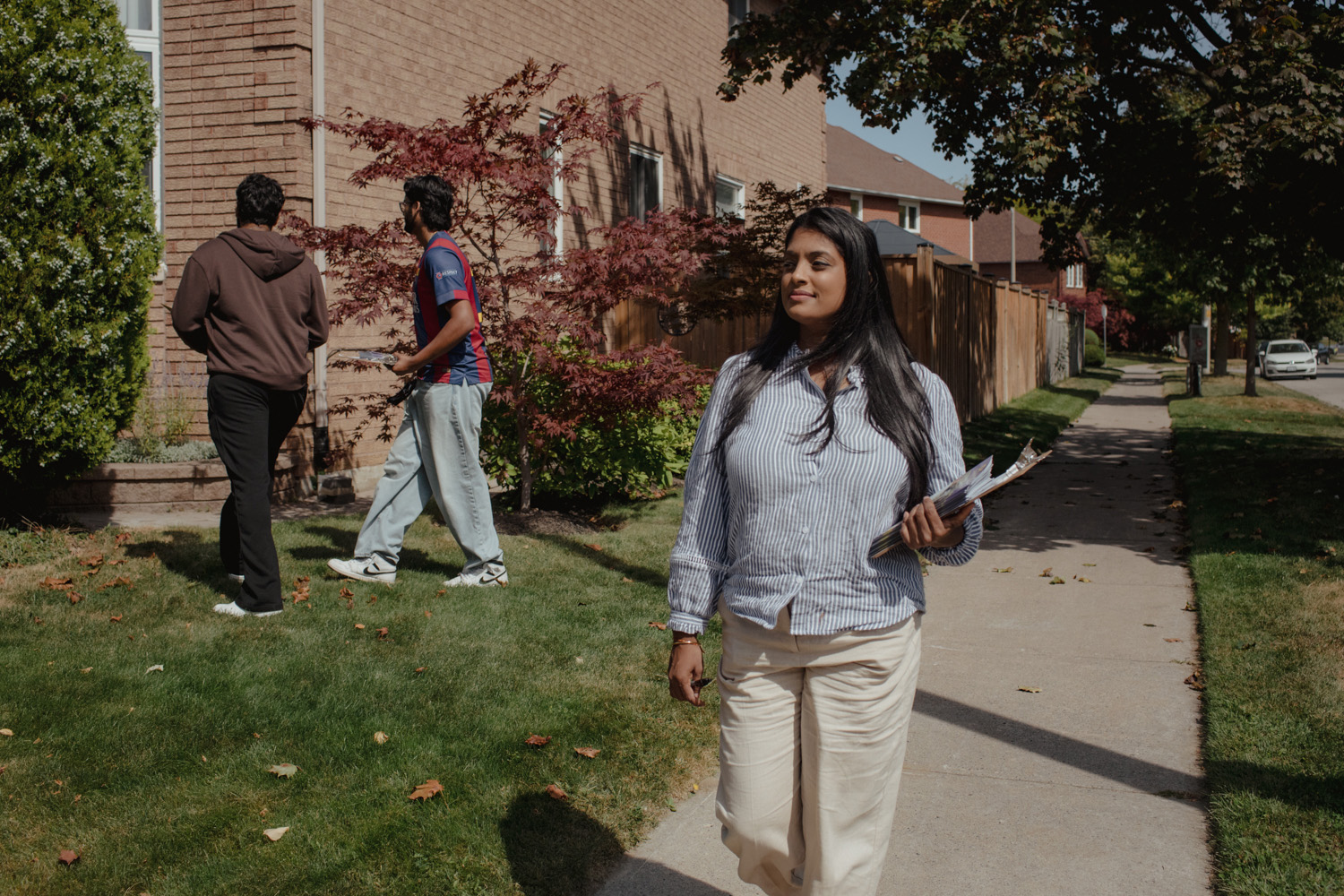
Sriskandarajah, who also works as a professor in York University’s humanities department, with an expertise in children and youth, says Scarborough doesn’t get the same quality of services that other parts of the city get. For example, timely snow removal is a common sticking point in the ward. In 2023, a City audit found that nearly 40 percent of “winter-related service requests” to 311 came from Scarborough. Daycare spots are also sorely needed in this part of the city: there were fewer than 20 childcare spaces per 1,000 in Scarborough Centre, half as many as in wards like Toronto–Danforth and Beaches–East York. Signing up is “like the Hunger Games,” she says.
At the school board, Sriskandarajah spearheaded an initiative to get more French immersion programs into Scarborough, which she says is lagging behind smaller neighbourhoods like Beaches–East York. During COVID, she also pushed the province to use public health data to distribute extra teachers to hotspots, rather than equally distributing them across the city. Sriskandarajah also supported a recent divisive TDSB proposal that would have put a small percentage of net income raised by schools into a common fund to support other schools, to create a more equal extracurricular and educational environment for students across the board.
Sriskandarajah’s husband, Parthi Kandavel, is the current councillor for Scarborough Southwest. Just a day into the nomination period, the pair were being described as a potential “power couple,” with references to consummate insiders Jack Layton and Olivia Chow. But Sriskandarajah isn’t fazed by being characterized as a political insider. “When I ran [for trustee] in 2018, nobody knew who my husband was,” she says. (Kandavel was already a trustee at the time.) “I ran because this is the community I have a close connection to, and have done work in.” When asked if she and Kandavel would vote together, Sriskandarajah says that she and her husband didn’t always vote together on the school board, so there’s no reason why they would at City Hall. “If you know how to convince your household to think exactly like you all the time, then please share the secret sauce,” she says, laughing.
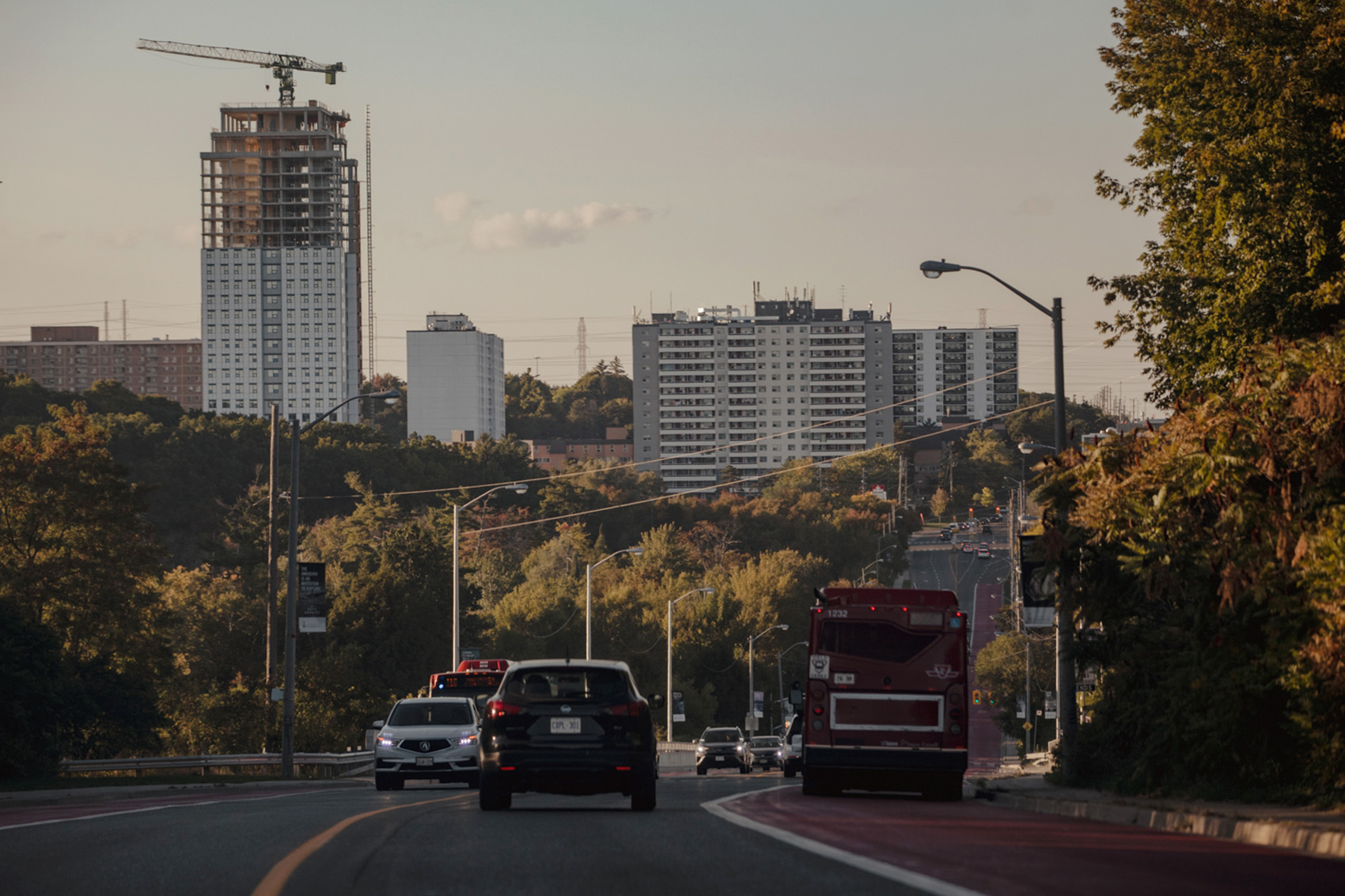
For candidate Reza Khoshdel, who works as a community organizer and the executive director of non-profit Community Centre 55 in East York, the election is all about community programming. Khoshdel says that compared with other areas, community centres in the ward “are offering a third of the programming here with probably three times the physical footprint—it makes me shake my head.”
Investment in community is the bedrock of Khoshdel’s platform. He wants to invest in programs for seniors—a passion he’s built in his work as a community centre leader in a ward that has a higher concentration of senior citizens than the city average. Khoshdel also wants to stimulate the local economy, pointing to some of the ward’s less-inhabited strip malls as a prime opportunity for redevelopment in order to bring more businesses to the area. “If we had a stronger and more vocal business community, I think it would benefit not only our local economy but our residents as well,” he says. “The truth is, a lot of Scarborough folks work outside of Scarborough and commute everyday. If we could keep people here, it would lead to a better quality of life.”
Khoshdel agrees that Scarborough voters have been left out by the rest of the city. He feels the frustration especially when he’s door-knocking, likening himself to a punching bag for constituents’ anger. People are mad that their streets aren’t cleared of snow when they need to go to work, they’re upset that the bus takes forever, they hate that there’s so much litter in their local parks, and they’re concerned about food insecurity in their neighbourhoods.
He describes how many residents bring up Rob Ford’s personal approach while mayor, despite not necessarily agreeing with his politics: the late Ford famously handed out his personal phone number and made house visits to fix whatever problem a constituent called him about. “That’s probably the only thing at City Hall that people want. They just want to feel like their elected officials care.”
For Walter Alvarez-Bardales, that care has taken the form of health care advocacy, something he’s fought for much of his political life. Alvarez-Bardales is Afro-Indigenous and grew up in Guatemala, coming to Canada as a refugee and subsequently working for the federal government. During the provincial election earlier this year, he ran as a Liberal candidate in Simcoe North near Orillia, though he lives in Scarborough (which was a “talking point” during the campaign, his campaign manager told Orillia Matters). Notably, he advocated for a Guatemalan refugee claimant who was diagnosed with an aggressive cancer and who didn’t have health coverage. Alvarez-Bardales asked the Stephen Harper government to allow him to receive care, despite waiting for his refugee claim to be approved, and was denied. He died untreated.
While he’s not as well-known as some of his competitors, Alvarez-Bardales says he hopes voters will want someone different, like him. Unlike other candidates, he’s not taking donations, instead using whatever resources he has to run a campaign that’s based on his advocacy work. “I don’t believe in strategy,” he says, adding that his only strategy is fact-based decision-making. “I could portray myself as a disruptor, but in reality, how much can I really disrupt in 12 months? But I would say that I am a ceiling-breaker who is committed to being truthful to voters.”
Fact-Checked Bios for All Scarborough-Rouge Park Candidates
Looking to learn more about who's running in this by-election? Check out The Local's Candidate Tracker for fact-checked bios and platforms for every candidate in the Scarborough Rouge Park by-election
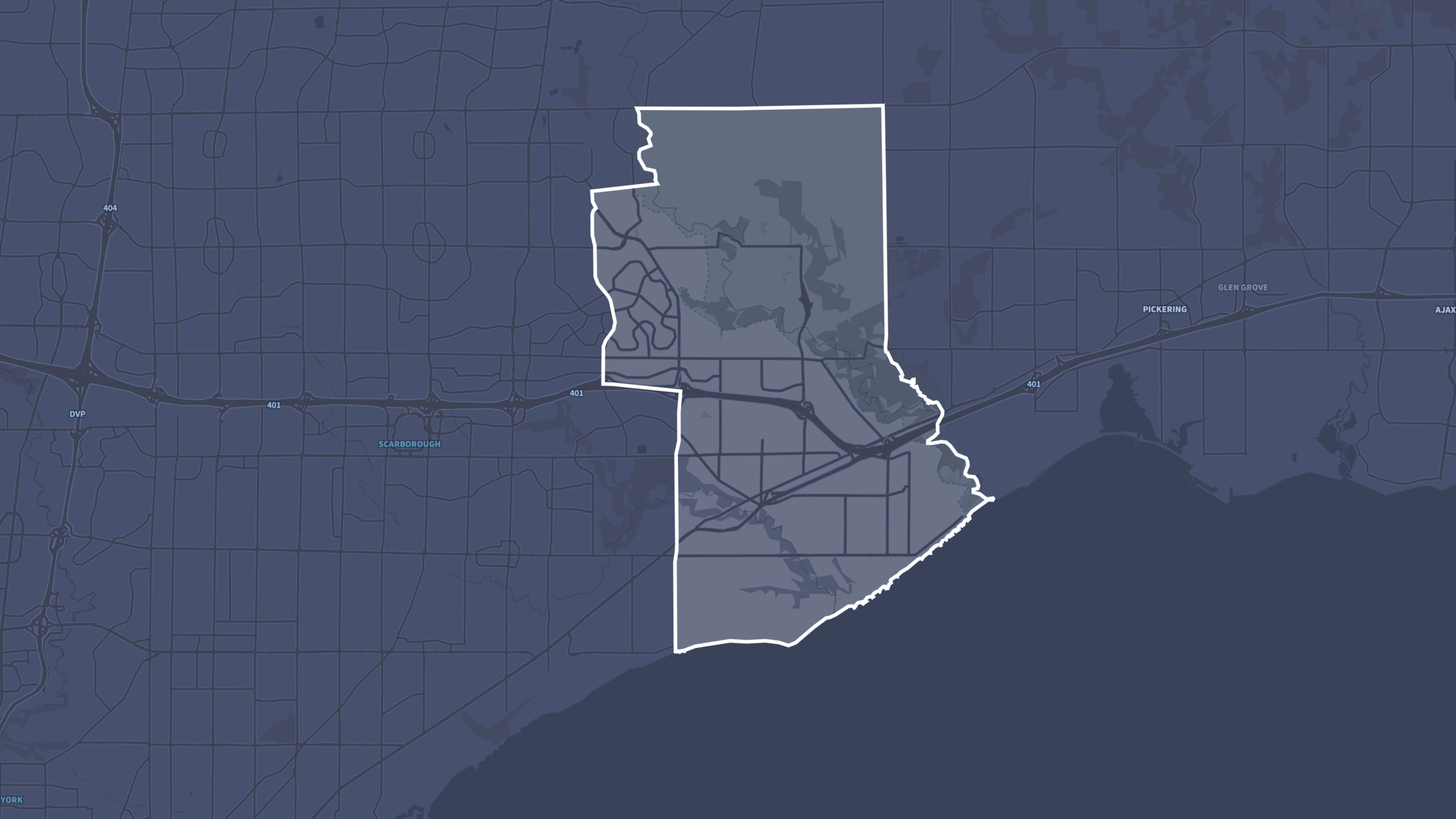
With the election just days away, Highland Creek resident Nithursan Elamuhilan is still undecided on what makes the perfect Scarborough-first councillor, but he’s taking a look at where candidates stand on transit and multi-tenant housing. Specifically, Elamuhilan says he wants the future councillor to keep renters top of mind. “I live right next to U of T Scarborough and Centennial College’s Morningside Campus, and while a lot of candidates focus on homeowners, we have a hidden population of renters,” he says. “I’m looking for someone who can be cognizant of that, because it’s easy to say you’ll lower property taxes and things like that, but that short-term thinking also hides the fact that what you save has to be cut in other places and resources.”
Affordable housing is what builds the next generation of residents, SUN’s Ron Parkinson says: it keeps people who want to stay in Scarborough in Scarborough, in the face of the ward’s shrinking population. He also wants to see more transit development, regulation of multi-tenant housing, and anti-crime measures.
“Change is difficult,” says Elamuhilan, but it’s necessary in his corner of the city. “If there is a candidate who is not afraid to make changes, in a community-focused way, while challenging old traditions and pushing things forward, that’s what’s most important.”
Correction—Sept. 29, 2025: a previous version of this article incorrectly described Scarborough Southwest as directly west of Scarborough–Rouge Park.
